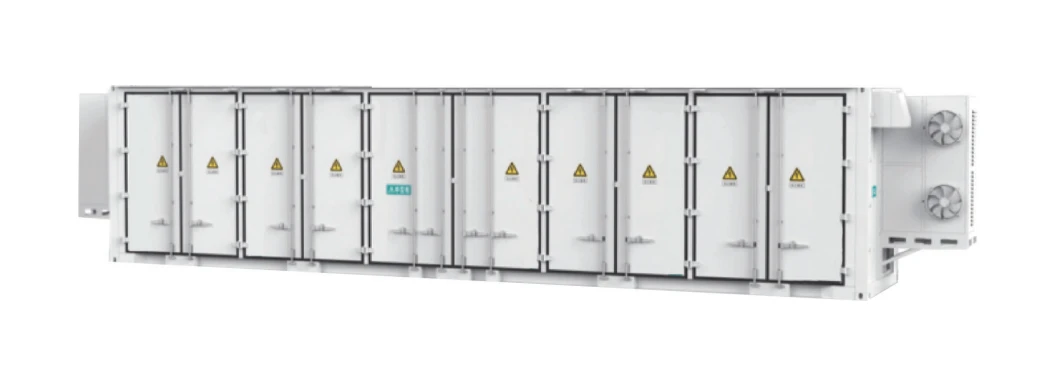
Ağu . 22, 2025 10:20 Back to list
Smart Energy Management System | Save Costs & Boost Efficiency
Optimizing Operations with Advanced Energy Management Systems
In today's rapidly evolving industrial landscape, the strategic importance of an energy management system (EMS) cannot be overstated. As businesses strive for operational efficiency, cost reduction, and sustainability, sophisticated EMS solutions provide the critical intelligence and control required to achieve these objectives. These systems integrate hardware and software to monitor, analyze, and optimize energy consumption across various industrial processes and facilities. From real-time data acquisition to predictive analytics and automated control, a robust EMS is the cornerstone of modern energy optimization strategies, particularly for large-scale industrial consumers and those integrating renewable energy sources. Our focus is on providing cutting-edge solutions, including centralized energy storage systems, which are integral components in advanced energy management frameworks.
The implementation of an effective EMS transcends mere compliance; it's a strategic investment that directly impacts a company's bottom line and environmental footprint. By accurately tracking energy flows, identifying inefficiencies, and enabling proactive interventions, an EMS empowers decision-makers with actionable insights. This leads to reduced utility bills, lower carbon emissions, enhanced grid reliability, and improved operational resilience. For B2B stakeholders, understanding the intricate capabilities and long-term benefits of these systems is crucial for sustainable growth and competitive advantage in an energy-intensive world.
Current Trends in Energy Management
The landscape of energy management is continuously shaped by technological advancements and global imperatives. Key trends driving the evolution of an energy management system include the proliferation of IoT (Internet of Things) devices, enabling granular data collection from a multitude of sensors and meters. This deluge of data fuels the rise of AI and Machine Learning algorithms, which are increasingly employed for predictive maintenance, anomaly detection, and highly accurate load forecasting. These intelligent capabilities allow an EMS to anticipate energy demand, optimize dispatch of energy resources (including storage), and identify potential equipment failures before they occur.
Furthermore, the integration of renewable energy sources, such as solar and wind, into industrial operations necessitates more dynamic and responsive energy management. Modern EMS solutions are evolving to manage intermittency, facilitate seamless grid synchronization, and optimize self-consumption. The concept of "prosumers" – entities that both consume and produce energy – is gaining traction, with EMS platforms becoming central to managing bi-directional energy flows. Microgrid solutions, often underpinned by a robust energy management system ems, are also seeing significant growth, offering enhanced resilience and localized energy independence for critical infrastructure. Cybersecurity in EMS is another paramount concern, as these systems become increasingly interconnected, demanding robust defenses against potential threats to ensure operational integrity.

Manufacturing Process Flow of an Energy Management System (Conceptual for Component Integration)
While a complete energy management system is a complex integration of software and hardware, the manufacturing of its critical physical components, particularly those for power electronics and control units, follows stringent industrial processes to ensure reliability and performance. This section outlines a generalized process flow, emphasizing key stages relevant to components like those found in a centralized energy storage system.
1. Design and Prototyping:
- • Conceptualization & Schematic Design: Initial definition of system architecture, communication protocols (e.g., Modbus, IEC 61850), and functional specifications. Materials selection for enclosures (e.g., high-grade aluminum alloys for heat dissipation, corrosion-resistant steel) and PCBs (e.g., FR-4 with copper traces).
- • Hardware Prototyping: Development of circuit boards and control units. This involves precise CNC machining for custom enclosures and heat sinks, often utilizing materials like 6061-T6 aluminum for its strength-to-weight ratio and thermal properties. Casting and forging might be employed for specialized structural components requiring high mechanical integrity.
2. Component Sourcing & Fabrication:
- • PCB Manufacturing: Multi-layer PCB fabrication, often adhering to IPC standards for reliability. Sourcing of high-quality electronic components (microcontrollers, power modules, communication chips).
- • Enclosure Production: Precision CNC machining for intricate part geometries, ensuring tight tolerances for environmental sealing (e.g., IP65 rating for dust and water ingress protection). Surface treatments like anodizing or powder coating are applied for corrosion resistance, crucial for target industries like petrochemicals and water supply & drainage.
3. Assembly & Integration:
- • Module Assembly: Integration of PCBs into enclosures, wiring, and connection of sensors and communication interfaces. This stage adheres to strict quality control protocols to ensure robust mechanical and electrical connections.
- • Software Loading & Configuration: Flashing of firmware, loading of operating systems, and initial configuration of the EMS software. This ensures the hardware can communicate and process data as designed.
4. Testing & Quality Assurance:
- • Functional Testing: Rigorous testing of all inputs, outputs, communication interfaces, and control logic. This includes simulating various operational scenarios.
- • Environmental Testing: Components are subjected to extreme temperature, humidity, vibration, and electromagnetic compatibility (EMC) tests to ensure resilience in harsh industrial environments. Compliance with standards such as ISO 9001 for quality management, ISO 14001 for environmental management, and product-specific standards like ANSI C12.20 for electricity meters is paramount.
- • Lifecycle & Reliability Testing: Accelerated aging tests to estimate service life, typically aiming for a minimum of 15-20 years for critical industrial components under specified operating conditions. This ensures long-term energy management system reliability.

Technical Specifications for an Advanced Energy Management System Component (Example: Centralized Energy Storage Integration)
A critical component often integrated with a comprehensive energy management system is a centralized energy storage system. These systems provide the flexibility needed for peak shaving, load shifting, and seamless integration of intermittent renewables. Below are illustrative technical parameters vital for the performance of such a system, crucial for an effective oem energy management system solution.
| Parameter | Value/Description | Unit/Standard |
|---|---|---|
| System Capacity (Nominal) | 100 kWh - 10 MWh+ | kWh / MWh |
| Power Rating (PCS) | 50 kW - 5 MW+ | kW / MW |
| Battery Chemistry | Lithium Iron Phosphate (LiFePO4) | N/A |
| Cycle Life | ≥ 6000 cycles @ 80% DoD | Cycles |
| Operating Temperature Range | -20°C to +55°C | °C |
| System Efficiency (Round-trip) | ≥ 95% | % |
| Communication Protocols | Modbus TCP/RTU, CAN, IEC 61850 | N/A |
| Protection Class (Enclosure) | IP54 / IP65 (Outdoor units) | IEC 60529 |
| Certifications | CE, UL 1973, IEC 62619, UN 38.3 | N/A |
| Lifespan (Design) | 15 - 20 years | Years |
These specifications highlight the robust engineering required for industrial-grade energy storage, demonstrating its capability to integrate seamlessly and reliably within a broader energy management system ems. Such systems are designed for longevity and resilience, critical factors for B2B investments.
Application Scenarios and Technical Advantages
The versatility of an advanced energy management system allows for its deployment across a wide array of industrial sectors, delivering significant technical and operational advantages. Our solutions are designed to address the unique challenges of various environments, ensuring optimal performance and maximum return on investment.
Target Industries & Specific Advantages:
-
•
Petrochemical Industry:
This sector demands extremely high reliability and safety. An EMS provides precise control over energy-intensive processes like distillation and cracking, enabling significant energy saving through optimized load balancing and power factor correction. The robust design of our components ensures corrosion resistance and resilience to harsh chemical environments, extending equipment lifespan and reducing maintenance costs. Real-time monitoring of energy consumption at individual process units allows for immediate identification and rectification of inefficiencies.
-
•
Metallurgy and Heavy Manufacturing:
Characterized by intermittent, high-power demands (e.g., electric arc furnaces). An EMS, especially when integrated with energy storage, excels in peak shaving, drastically reducing demand charges from utilities. It also manages the impact of harmonically distorted loads, improving power quality and protecting sensitive equipment. The system's ability to analyze large data sets from melting, rolling, and forging processes helps in optimizing production schedules for energy efficiency, leading to substantial energy saving.
-
•
Water Supply & Drainage (Water Treatment Plants):
Pumping and treatment operations are continuous and energy-intensive. An EMS optimizes pump scheduling based on real-time demand and energy tariffs, leveraging off-peak electricity prices for significant operational savings. It also monitors motor efficiency and predicts maintenance needs, enhancing overall system reliability. Our systems are designed to withstand humid and potentially corrosive environments typical of water infrastructure, ensuring long-term performance and low total cost of ownership.
-
•
Commercial Buildings & Data Centers:
For large commercial complexes and mission-critical data centers, an EMS optimizes HVAC, lighting, and IT infrastructure loads. Demand response capabilities allow these facilities to reduce consumption during grid stress events, earning incentives. Integration with centralized energy storage provides crucial backup power and enhances grid stability, ensuring uninterrupted operations for sensitive equipment. Data centers particularly benefit from precise power monitoring and environmental controls managed by an energy management system ems for optimal PUE (Power Usage Effectiveness).

Vendor Comparison: Key Differentiators in Energy Management Systems
Choosing the right provider for an energy management system is a strategic decision requiring careful evaluation of capabilities, reliability, and support. While many vendors offer EMS solutions, key differentiators often emerge in their approach to integration, data analytics, and customization for specific industrial needs. The table below highlights critical parameters for comparing EMS providers.
| Criterion | Generic Vendor A | Generic Vendor B | Our Solutions (Representative) |
|---|---|---|---|
| Integration Capability | Limited third-party hardware integration | Moderate, mostly via standard protocols | Extensive via open APIs, custom drivers, all major protocols (Modbus, IEC 61850, BACnet) |
| Data Analytics & AI | Basic reporting, manual analysis | Pre-defined dashboards, some anomaly detection | Advanced AI/ML for predictive analytics, anomaly detection, automated optimization, and forecasting |
| Customization for OEM | Minimal, fixed modules | Some configurable options | Full OEM integration, white-labeling, tailored software/hardware development for specific needs (OEM energy management system expertise) |
| Cybersecurity Features | Standard network security | Encryption, basic access control | Multi-layer security, regular vulnerability assessments, secure boot, robust access management (ISO 27001 principles) |
| Scalability & Future-Proofing | Limited vertical scaling | Modular, but potentially costly expansion | Highly scalable architecture (cloud-native/edge computing), designed for future technology adoption and expansion |
| Service & Support | Tiered, basic SLA | Regional support, standard response times | 24/7 technical support, dedicated account management, remote diagnostics, on-site service options with guaranteed SLAs |
Our commitment to advanced integration, sophisticated AI-driven analytics, and deep OEM customization sets us apart. We understand that each industrial environment is unique, requiring a flexible and powerful energy management system ems that can adapt and evolve with changing operational demands and market dynamics.
Customized Solutions for OEM Energy Management Systems
Recognizing the diverse needs of Original Equipment Manufacturers (OEMs), we specialize in providing tailored oem energy management system solutions. Our approach moves beyond off-the-shelf products, offering deep customization that integrates seamlessly with existing OEM product lines and industrial processes. This ensures that the energy management capabilities are not just an add-on but an intrinsic, optimized part of their core offerings.
Our customization services include:
- • Hardware Co-development: Working closely with OEM engineering teams to design and produce custom hardware components, including specialized sensors, control modules, and power electronics that fit precise physical and functional requirements. This often involves specific casting, forging, or CNC machining for enclosures and mounting solutions.
- • Software Adaptation & White-labeling: Modifying our core EMS software for specific OEM applications, including custom user interfaces, data models, and algorithms. This can involve white-labeling the software to reflect the OEM's brand identity, providing a cohesive product experience.
- • Protocol & System Integration: Developing custom communication drivers and integration interfaces to ensure seamless data exchange between the EMS and other existing systems within the OEM's ecosystem (e.g., SCADA systems, ERP, MES). This ensures the energy management system functions as a unified part of the larger operational infrastructure.
- • Compliance & Certification Support: Assisting OEMs in navigating complex industry-specific regulations and certifications (e.g., specific safety standards for hazardous environments, regional grid codes) to ensure their integrated solutions meet all necessary compliance requirements.

Application Case Studies: Real-World Impact of EMS
Case Study 1: Large-Scale Petrochemical Facility
A major petrochemical complex, facing escalating energy costs and strict emission regulations, implemented our comprehensive energy management system ems. The solution integrated real-time monitoring of over 500 consumption points, predictive analytics for process optimization, and a centralized energy storage system for peak demand management. Within the first year, the facility achieved a verified 12% reduction in electricity consumption and a 15% decrease in peak demand charges. This translated to annual savings exceeding $2 million and a significant reduction in their carbon footprint, demonstrating the immediate financial and environmental benefits of a tailored EMS deployment. Corrosion resistance features of the system's hardware ensured long-term reliability in the challenging industrial environment.
Case Study 2: Municipal Water Treatment Plant
A municipal water treatment plant sought to reduce its substantial operational energy costs. Our energy management system was deployed to optimize the scheduling of high-capacity pumps and aerators based on real-time water demand and dynamic electricity pricing. The system's intelligent algorithms identified optimal periods for energy-intensive operations, shifting loads to off-peak hours. Result? A 9% reduction in overall energy expenditure, equivalent to $500,000 in annual savings. The robust, IP65-rated enclosures and corrosion-resistant materials of the deployed hardware ensured uninterrupted operation even in the humid and chemically active conditions of the plant, validating the system's suitability for water supply & drainage applications.
Case Study 3: Global Automotive Manufacturer (OEM EMS Integration)
We partnered with a leading automotive manufacturer to integrate an oem energy management system directly into their new assembly line equipment. Our custom-designed EMS module provided real-time energy consumption data for each robotic workstation and painting booth, allowing for granular optimization. Through software adaptation and bespoke hardware interfaces, the manufacturer could offer "Energy-Optimized" equipment to their end-clients. This collaboration resulted in an average 7% energy efficiency improvement per assembled vehicle and positioned the OEM as a leader in sustainable manufacturing solutions. The precision of CNC machined components and rigorous testing standards (ISO, ANSI) were critical to meeting the automotive industry's high quality and reliability expectations.
Trust & Reliability: Our Commitment to Clients
Building long-term partnerships based on trust and transparent commitments is fundamental to our operations. We ensure that every energy management system we deliver meets the highest standards of quality, performance, and support.
Frequently Asked Questions (FAQ):
Q: What is the typical lead time for an EMS deployment?
A: Lead times vary depending on the system's complexity and customization requirements. For standard modules, fulfillment can be as quick as 4-6 weeks. Custom OEM projects, involving hardware co-development and extensive software integration, typically range from 12-24 weeks from design finalization to delivery.
Q: What warranty is provided with your energy management system solutions?
A: We offer a standard 5-year warranty on all core hardware components and a lifetime software license with ongoing updates for critical security patches and minor feature enhancements. Extended warranty and service contracts are available for comprehensive coverage and preventative maintenance.
Q: How do you ensure data security and privacy within the EMS?
A: Our EMS platforms incorporate multi-layered cybersecurity protocols, including end-to-end encryption for data transmission, robust access controls, regular security audits, and adherence to industry best practices like ISO 27001 principles. We prioritize client data integrity and confidentiality.
After-Sales Support & Service:
- • 24/7 Technical Support: Our dedicated support team is available around the clock to assist with any operational queries or technical challenges, ensuring minimal downtime.
- • Remote Monitoring & Diagnostics: Leveraging secure remote access capabilities, our experts can perform diagnostics, conduct software updates, and troubleshoot issues proactively, often before they impact operations.
- • On-Site Service & Training: For complex issues or specific client needs, our field engineers provide on-site support, maintenance, and comprehensive training to client personnel, empowering them to maximize their EMS investment.
- • Continuous Improvement: We actively solicit customer feedback to drive continuous improvement in our products and services, ensuring our EMS solutions remain at the forefront of industry technology.

Conclusion
The implementation of a sophisticated energy management system is no longer merely an option but a strategic imperative for B2B enterprises aiming for operational excellence, cost optimization, and environmental stewardship. Our advanced EMS solutions, including robust centralized energy storage systems, are designed to empower industries across sectors – from petrochemical to metallurgy and water management – with granular control and actionable insights into their energy consumption. By leveraging cutting-edge technology, offering deep customization for an oem energy management system, and committing to unparalleled support, we enable businesses to achieve tangible energy savings, enhance reliability, and pave the way for a more sustainable and efficient future. Partner with us to transform your energy landscape and unlock new levels of performance and profitability.
References
- International Organization for Standardization. ISO 50001: Energy management systems — Requirements with guidance for use.
- U.S. Department of Energy. Energy Management System (EMS) for Buildings. Retrieved from energy.gov.
- Institute of Electrical and Electronics Engineers (IEEE). IEEE Std 1547™-2018: Standard for Interconnection and Interoperability of Distributed Energy Resources with Associated Electric Power Systems Interfaces.
- National Renewable Energy Laboratory (NREL). The Role of Energy Storage in Grid Modernization. Retrieved from nrel.gov.
- American National Standards Institute (ANSI). ANSI C12.20: American National Standard for Electricity Meters – 0.1 and 0.2 Accuracy Classes.
This is the last article
-
Smart Energy Management System | Save Costs & Boost Efficiency
NewsAug.22,2025
-
Advanced Energy Management Systems: Optimize & Save Costs
NewsAug.19,2025
-
Smart Energy Management System: Control & Monitor Usage
NewsAug.18,2025
-
EMS for Advanced Energy Management & Storage
NewsAug.17,2025
-
Boost Efficiency with Smart EMS Energy Management Systems
NewsAug.16,2025
-
Energy Management System (EMS): Optimize & Save Energy Costs
NewsAug.15,2025


